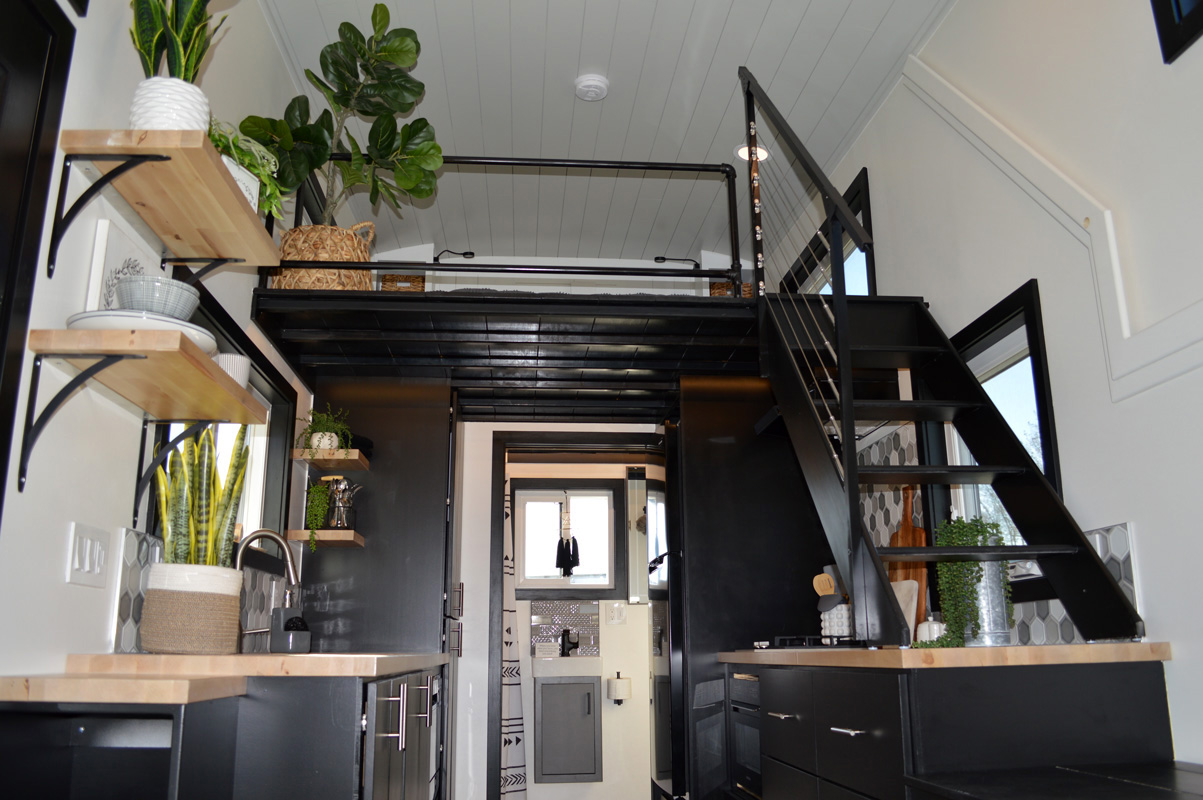Living Small: The rise of a locally-born and pandemic-inspired tiny home maker

Throughout the whirlwind of pandemic-related catastrophes, there’s a smattering of happy accidents that we can look back on today and appreciate with perspective.
These include the advent of ghost kitchens, the rise of remote work, and a greater appreciation for our social freedom that has (largely) returned to normal.
This something Ron Williams, the co-founder of the business now known as Rulaco Tiny Homes, knows all too well.
If you had asked him about the state of his company–which was highly regarded as a top home and business remodel specialist after more than two decades–in 2020, while his team was finishing interior work on Market Bar, one of North Market Bridge Park’s cornerstone vendors, his response would have been dire.
“At that point, it was our only job, because at the time people just didn’t want others coming into their homes,” he said.
BROUGHT TO YOU BY
That’s when Williams and Rulaco co-founder Tom Culp knew they had to pivot if their brand were going to survive, and they did so starting small. Literally.
“I think the world changed a bit during the pandemic. The way people work today and look at what’s important has a lot of them downsizing their lives. Which means more and more tiny homes,” Williams said. “The tiny house idea started creeping into our minds and the next thing we knew, we were up in Michigan buying our first trailer to build a home on.”
And just like that, Rulaco was born. Well, reborn, more accurately. Today, the business operates as a full-time builder of trendy tiny homes.
According to WIlliams, the company’s switch– which included a move into a 7,500 square-foot shop on Joyce Ave.–has included a learning curve for the company’s seven-person team. While Rulaco previously operated out of a 1,200 square-foot space in Westerville, the crew was peregrine while the company still focused on remodeling, working primarily from the site of whatever job they were on that day.
“As easy as it looks to build smaller houses, I wish it was that easy,” Williams said. “We’ve had to change our mindset from being home remodelers to getting everything people need in a 200 square-foot home; that took some learning. And we’re still learning how to totally utilize that space, make it functional, build them so they’re energy efficient and green.”
Williams said–aside from the freedom and mobility the style of living affords–the idea of energy-efficiency is another reason that’s central to the tiny home explosion.
“The whole industry is looking at the wastefulness of the way we utilize energy and home use and trying to make things better,” he said.
Tiny homes from Rulaco are typically in the realm of 20 feet by 8 feet, although nearly all of the process is customizable. Each home is built from the ground up–over a three-month period–on specialty trailers which serve as the homes’ foundations and allow them to be moved from site to site.
And throughout the country, more and more areas are going small as well. Tiny-home friendly laws are popping up everywhere from the City of Los Angeles to the states of Maine and Minnesota.
Closer to home, pockets of Ohio have also become Midwestern champions for the movement. Just along the Buckeye State’s border with Indiana, Cedar Springs Tiny Village in New Paris, Ohio serves as a lakefront community made entirely of tiny homes.
Hocking Hills Tiny Homes–many of which are less than an hour from Downtown Columbus–offers a handful of different airbnb-style tiny home properties for rent, many starting at as little as $89 per night.
“It’s really opened my 58 year-old mind up to the benefits that people can get from having less stuff, and I think a lot of people see it that way too. There’s a whole lot on the horizon for tiny homes,” Williams said.
Want to read more? Check out our print publication, (614) Magazine. Learn where you can find a free copy of our new February issue here!
BROUGHT TO YOU BY





